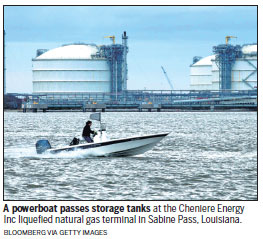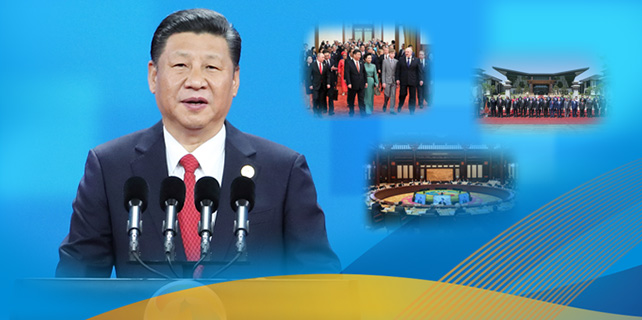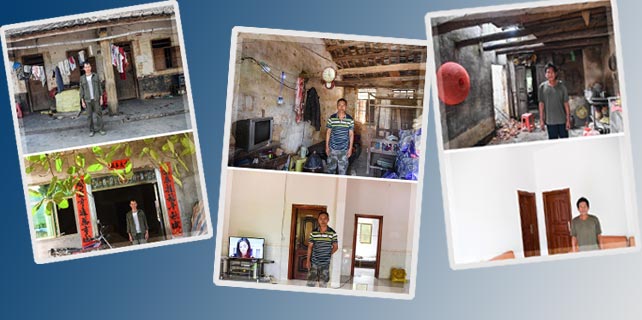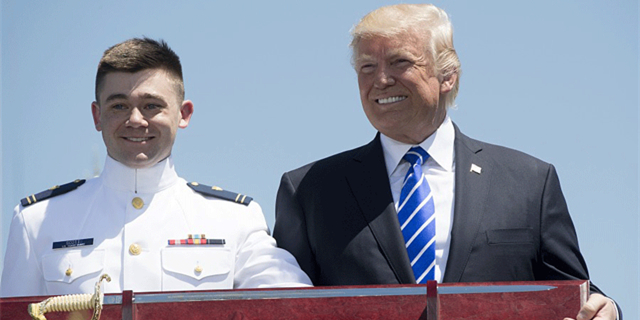Cheniere looks to increase gas sales to China
Cheniere Energy is looking to channel some more energy into China.
That energy comes in the form of liquefied natural gas, of which the Houston-based company is a major exporter.
On May 11, the US and Chinese governments announced the first steps in their 100-Day action plan of the US-China Comprehensive Economic Dialogue.
A month after US President Donald Trump and President Xi Jinping met in Florida, the two sides reached a consensus on issues in areas including agricultural trade, financial services, investment and energy.

"The United States welcomes China, as well as any of our trading partners, to receive imports of LNG from the United States. The United States treats China no less favorably than other non-FTA trade partners with regard to LNG export authorizations," the US Commerce Department announced in a May 11 release.
"Companies from China may proceed at any time to negotiate all types of contractual arrangement with US LNG exporters, including long-term contracts ..."
Until now, Cheniere had been exporting LNG to China only on the spot market.
"The China-US trade deal is a strong signal from both governments that US LNG exports to China can help both countries achieve their economic and environmental goals," Cheniere Energy CEO Jack Fusco told China Daily. "This agreement will enable China to diversify its supply of reliable, cleaner burning natural gas to power their economy, develop infrastructure and create jobs in the US, and balance bilateral trade."
The day after the announcement, shares of Cheniere rose as much as 5 percent to $49.50 to their highest level since February.
The stock has more than doubled since Cheniere's Sabine Pass terminal in Louisiana opened in February 2016.
Cheniere also owns the Corpus Christi LNG terminal in Texas and the Creole Trail pipeline, a 94-mile stretch interconnecting Sabine Pass with various interstate pipelines.
Cheniere also is helped by the Panama Canal, which reduces shipping time and costs. Eight of nine cargoes originating from the Sabine Pass Terminal in Louisiana to China have gone through the Panama Canal, Cheniere spokesman Eben Burnham-Snyder told China Daily.
The deal also will help developers target Chinese buyers directly and could support direct Chinese investment into liquefaction and upstream developments in the US, according to Zacks.com, a stock research service.
Since the shale or fracking (the process of extracting nat gas) boom in the US started a decade ago, energy companies have been building export facilities, with as much as 169.8 million cubic meters per day of capacity due by the end of 2018, Reuters reported.
Sabine Pass is the first and only major LNG export facility in the continental US. The US has been a net importer of natural gas for 60 years, which is expected to change this year because of LNG exports.
The average price per 1,000 cubic feet of US LNG in February was $5.99, up from a low of $3.65 reached in October 2016 but much lower than the $16.67 from November 2015, according to oilprice.com.
Prices tailed off between November 2015 and February 2016 with new supply coming online.
But according to Shell's LNG Outlook, demand for LNG is expected to grow by 4-5 percent annually until 2030. That report also said that China and India were the two fastest-growing importers of LNG.

(China Daily USA 05/19/2017 page2)









